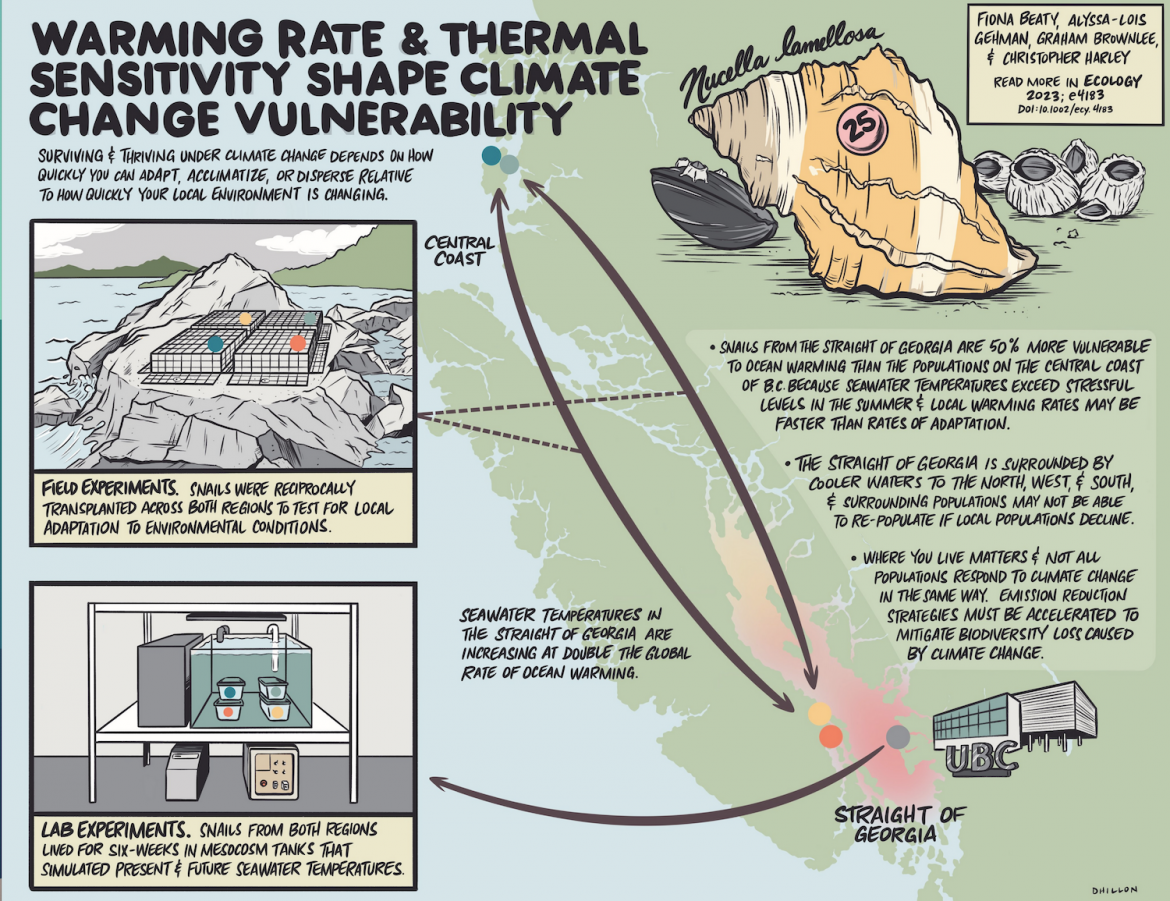
Image by Rush Dhillon
Fiona Beaty, Alyssa-Lois M. Gehman, Graham Brownlee, Christopher D. G. Harley. 2023. Not just range limits: Warming rate and thermal sensitivity shape climate change vulnerability in a species range center. Ecology
Abstract
Climate change manifests unevenly across space and time and produces complex patterns of stress for ecological systems. Species can also show substantial among-population variability in response to environmental change across their geographic range due to evolutionary processes. Explanatory factors or their proxies, such as temperature and latitude, help parse these sources of environmental and intraspecific variability; however, overemphasizing latitudinal trends can obscure the role of local environmental conditions in shaping population vulnerability to climate change. Focusing on the geographic center of a species range to disentangle latitude, we test the hypothesis that populations from warmer regions of a species range are more vulnerable to ocean warming. We conducted a mesocosm experiment and field reciprocal transplant with four populations of a marine snail, Nucella lamellosa, from two regions in British Columbia, Canada, that differ in thermal characteristics: the Central Coast, a cool region, and the Strait of Georgia, one of the warmest regions of this species' range and one that is warming faster than the Central Coast. Populations from the Strait of Georgia experienced growth reductions at contemporary summertime seawater temperatures in the laboratory and showed stark reductions in survival and growth under future seawater conditions and when outplanted at their native transplant sites. This indicates a high vulnerability to ocean warming, especially given the faster rate of ocean warming in this region. In contrast, populations from the cooler Central Coast demonstrated high performance at contemporary seawater temperatures and high growth and survival in projected future seawater temperatures and at their native outplant sites. Given their position within the geographic center of N. lamellosa's range, extirpation events in the vulnerable Strait of Georgia populations could compromise connectivity within the metapopulation and lead to gaps across this species' range. Overall, our study supports predictions that populations from warm regions of species ranges are more vulnerable to environmental warming, suggests that the Strait of Georgia and other inland or coastal seas could be focal points for climate change effects and ecological transformation, and emphasizes the importance of analyzing climate change vulnerability in the context of regional environmental data and throughout a species' range.